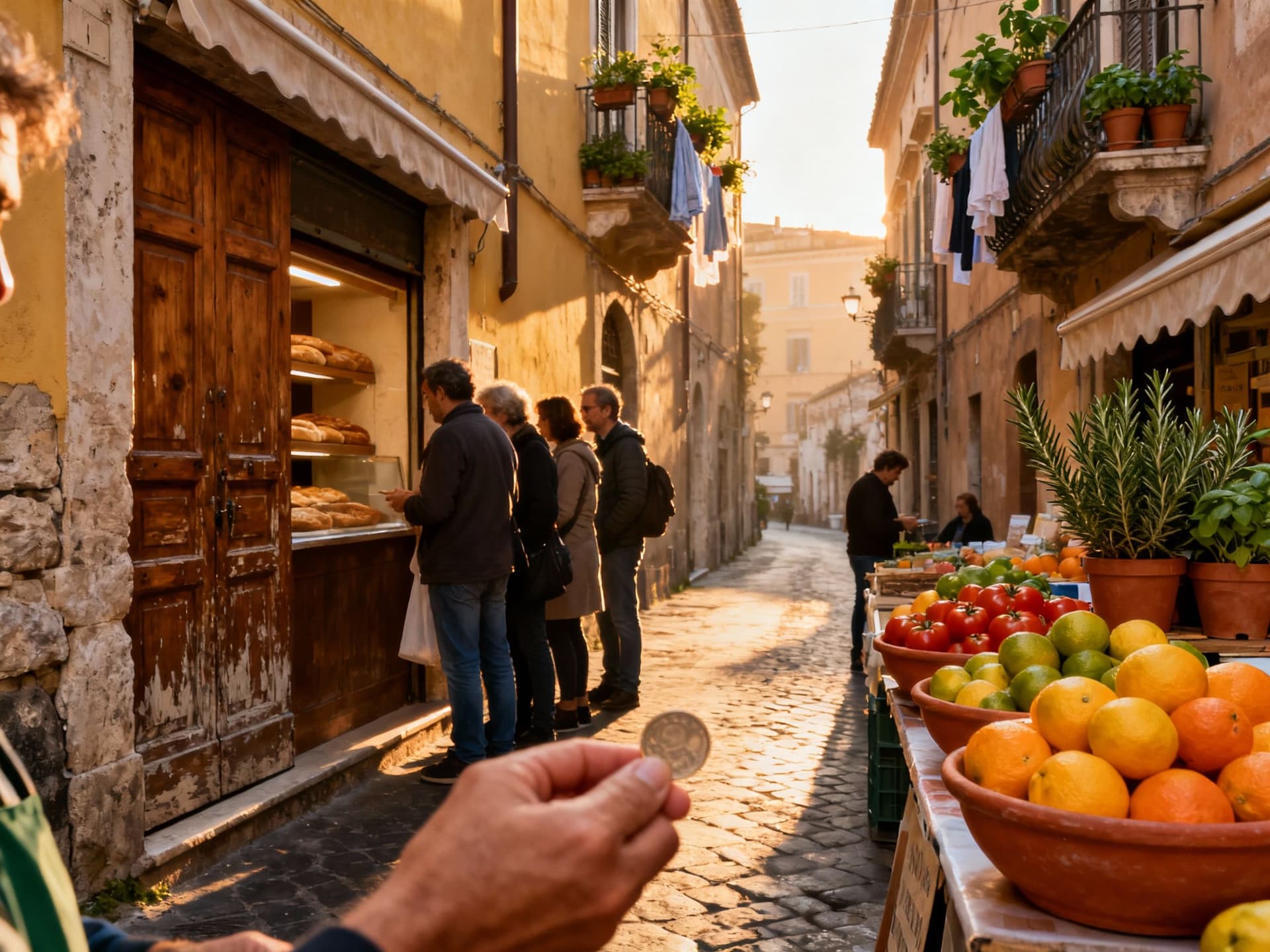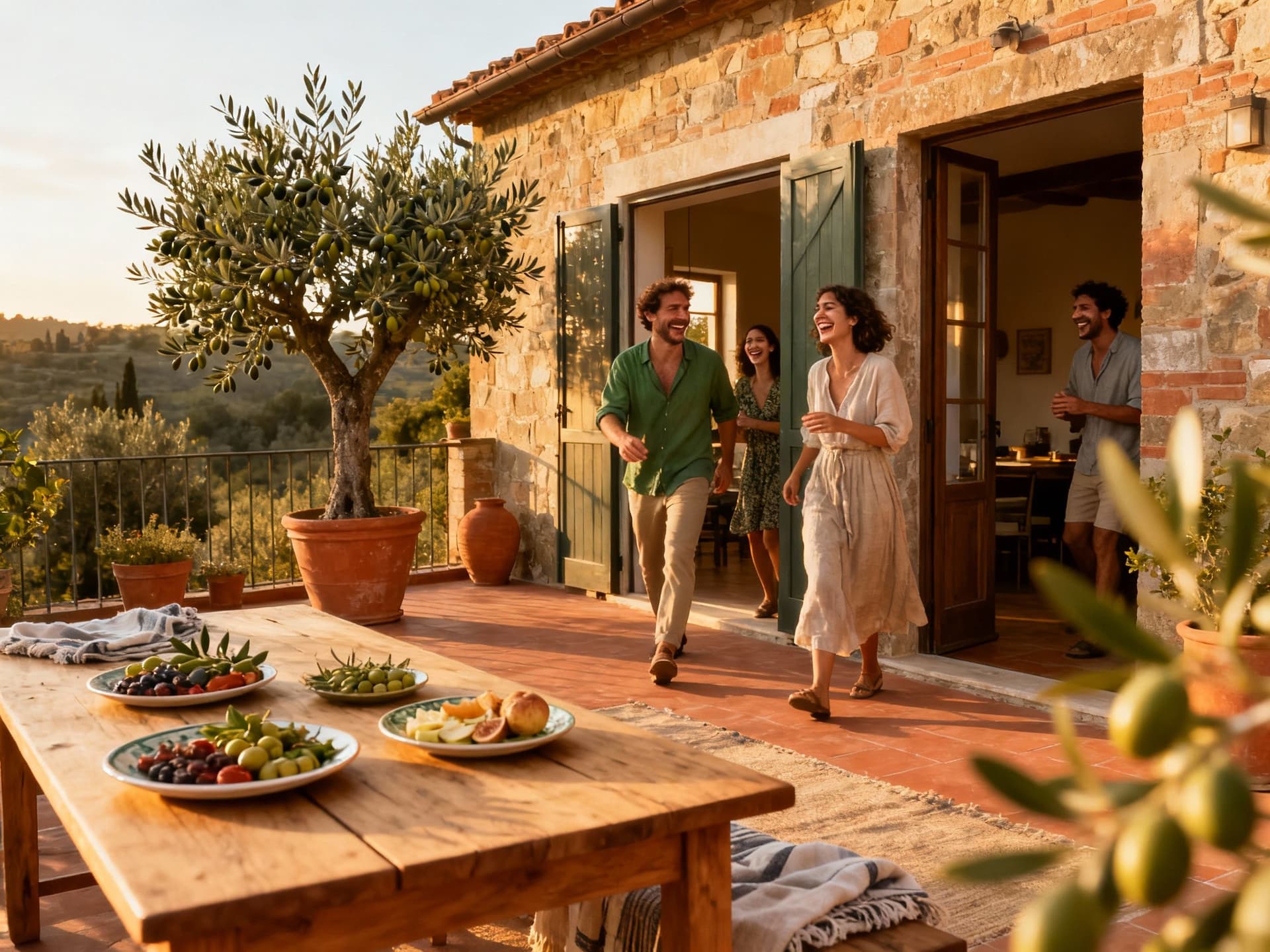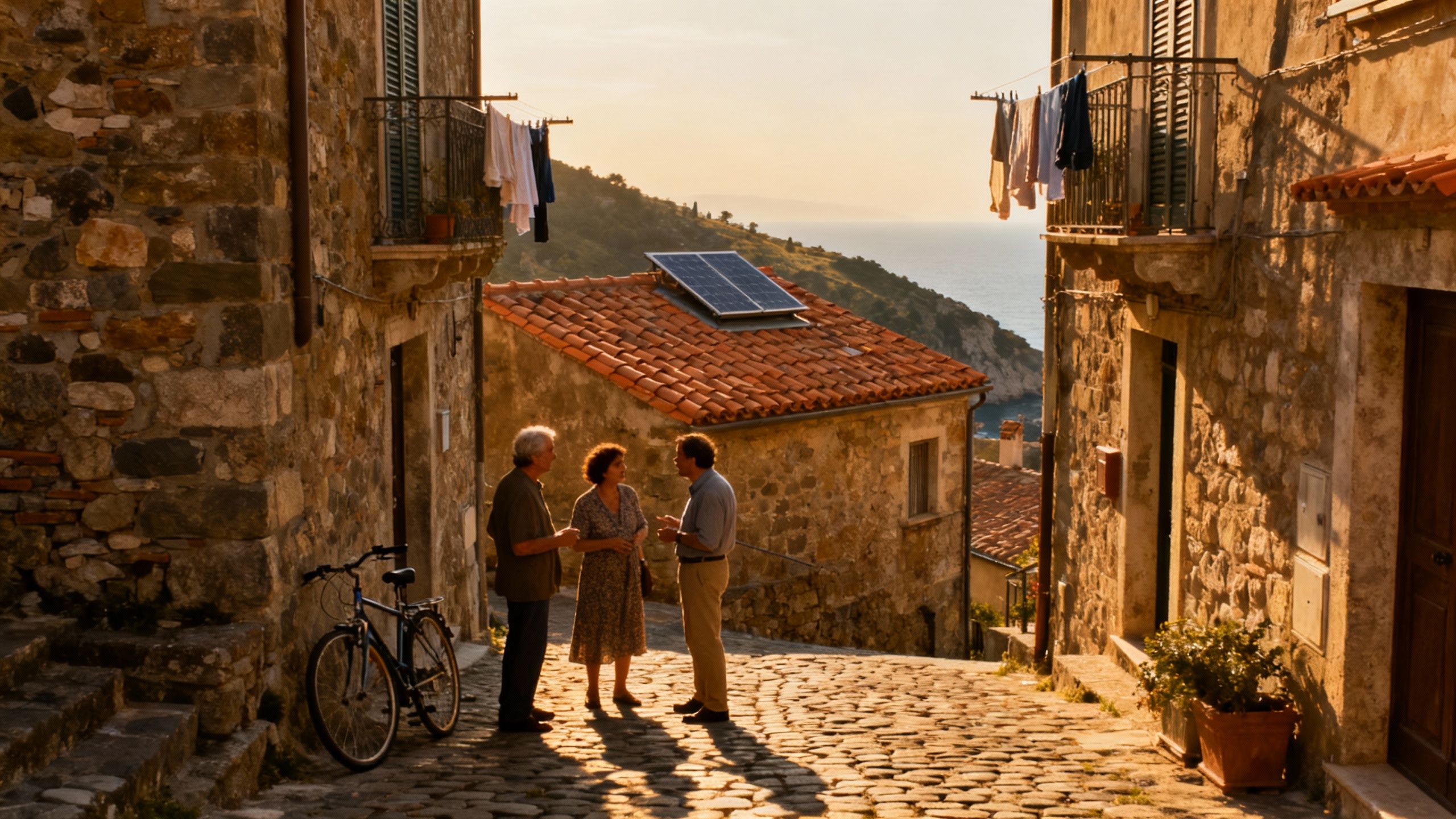Seasonal Streets & Stone: Italy’s Life-First Property Play
Fall in love with Italy’s seasonal rhythms and sustainable homes—match market signals (Istat, Nomisma) with local knowledge to buy a life, not just a property.
Imagine waking to the smell of fresh espresso, a market stall of sun-ripened tomatoes around the corner and a narrow lane where neighbors hang baskets of herbs from stone windowsills — this is Italy lived slowly, season by season. For international buyers drawn to gardens, local craft and a life shaped by food and light, Italy feels at once timeless and pragmatically modern: small towns with resilient traditions, coastal villages skirting biodiverse marine preserves, and cities that still pulse with daily rituals. But the romance comes with real questions — when to look, which neighbourhoods keep their character, and how green living tangibly affects comfort and costs. In the sections below I sketch both the sensory life you’ll move into and the concrete market signals that tell you when to act.
Living the Italian Life — seasons, streets and small rituals

Italy’s daily rhythm is shaped by place and season: mornings in Trastevere or Pigneto begin with bakeries filling the air; afternoons in Liguria find fishermen mending nets; autumn in Alba is truffle-quiet and full of communal harvests. Neighborhoods are culinary stages — Florence’s Oltrarno trades gallery openings for lunchtime trattorie, while Naples’ Forcella hums with street food and family life. These textures matter for a buyer: a home next to a morning market and a piazza gives a different social life than one near a quiet olive grove where fall brings the clack of harvesters and the scent of pressed fruit. Think of lifestyle as infrastructure — the daily cues, smells and exchanges that become the scaffolding of year-round living.
Neighborhood spotlight: Rome’s Trastevere and Testaccio
If you want streets that feel inhabited rather than staged, Trastevere’s cobbles and ivy-draped facades keep the ritual of aperitivo and late family dinners alive, while Testaccio’s market and food culture anchor a neighborhood that still favours craftsmanship over tourist spectacle. In both areas artisans and small grocers maintain seasonal knowledge — which baker uses stone-ground flour, which shop still sells chestnuts roasted in winter — and that knowledge is a daily luxury. Homes here often have quirky layouts, thick stone walls and balconies that become living rooms in summer; expect to trade open-plan minimalism for rooms that hold warmth and history.
Food, markets and seasonal living
A day in an Italian neighbourhood often orbits food: morning market runs, a light midday pasta, an evening aperitivo. In Florence the Mercato Centrale shows how local supply chains still feed city life; in Puglia small farmers’ co-ops sell olive oils pressed that very week. For buyers wanting a farm-to-fork life, seek properties with storage for preserves, outdoor space for pots and shade, and proximity to producers who follow seasonal cycles rather than supermarket rhythm. This practical detail reshapes property choices: sizeable kitchens and courtyards matter more than floor-to-ceiling glazing in many Italian homes.
Lifestyle highlights to look for when choosing a neighbourhood:
Morning market within a 10–15 minute walk (e.g., Mercato di Testaccio, Mercato Centrale).
Access to seasonal food culture — olive harvests, truffle fairs, local sagra events.
Nearby artisans or workshops (ceramics in Deruta, textiles in Prato) that sustain a maker community.
Making the move: practical decisions that keep the lifestyle intact

Romance without practicality can become a regret. Recent national data shows prices rose year‑on‑year (Istat reported a 4.4% increase in Q1 2025 HPI), even as new-build price dynamics differ from existing stock. This means the right time to buy often aligns with where you want to live — buying in regions with more existing stock (Tuscany hill towns, Apulian villages) can offer character at lower premium than central Milan or coastal Amalfi. Match your lifestyle wish-list to realistic property types and remember energy class and adaptability matter both for comfort and long-term costs.
Property styles & what they mean for daily life
A stone farmhouse in Umbria gives you thick walls, natural cooling and room for a kitchen garden, ideal for seasonal living, but expect renovation realities: wiring, insulation and plumbing often need modernising. A city apartment in Brera or Navigli offers cultural density and cafés on the doorstep, yet smaller outdoor space and higher energy bills are trade‑offs. Energy class (Classe Energetica) is not just a green label here — it predicts comfort and future-proofing as Italy phases in stricter efficiency norms. Seek properties where modest retrofits (external insulation, efficient boiler, or solar water heating) can meaningfully change year-round comfort.
Working with local experts who understand both house and life
A local agent who knows where seasonal markets happen, which tradespeople restore stone, and which neighbourhoods retain community life is invaluable. Nomisma’s forecasts show steady transaction activity through 2027, which means competition exists in attractive pockets — the right local partner will spot off‑market chances and help translate lifestyle priorities into structural must-haves. Look for agents who can introduce you to a neighbourhood’s small networks — olive oil presses, ceramic studios, the neighbourhood barista — not just to listings.
Practical steps that bridge lifestyle and purchase (do these in order):
Spend a season there: live locally for 2–4 weeks to feel daily rhythms (markets, noise levels, light).
Prioritise energy class and outdoor space over showy sea views for long-term comfort and year-round use.
Hire a local architect or builder early to assess retrofit costs for insulation, rainwater capture or solar hot water.
Insider knowledge — what expats wish they’d known (and where myths mislead)
Expat stories often start romantic and end practical: the village that felt empty in winter and luminous in summer, the narrow apartment that hid damp issues, the coastal home whose sea view came with limited accessibility. A common myth is that coastal towns always appreciate fastest — ISTAT and regional data show prices vary widely and existing-stock villages inland can outperform in value per euro of lifestyle. Another surprise: investing in modest green upgrades (thermal windows, efficient heating, solar water) often returns both comfort and resale appeal faster than cosmetic renovations.
Cultural integration and everyday etiquette
To live well in Italy you’ll learn a few quiet rules: Sunday market rhythms, late family dinners, the centrality of coffee rituals and gestures of neighbourly reciprocity. Learning basic Italian opens doors — not just bureaucratic ones, but invitations to harvests, village festas and behind-the-scenes artisan studios. Many expats find that joining a local association (pro loco, cooperative) accelerates belonging and practical help during renovations or permit processes.
Long-term stewardship: how your home becomes part of the place
Think beyond purchase: in Italy homes often join living landscapes. Plant choices, water use, and restoration methods affect biodiversity and costs. Trends show a growing premium for energy-efficient, climate-adapted homes — shallow eaves and shutters in the south, ventilation and insulation in the north — so invest in modest, region-appropriate upgrades. Engaging local craftspeople not only preserves character but strengthens the community fabric that makes life here rich.
Conclusion — the first small steps toward living here
If Italy’s allure is the slow accumulation of small pleasures — a garden that yields jars of marmalade, a square that remembers your name — pair that dream with a plan: live a season locally, prioritise energy and outdoor space, and work with agents who value place as much as price. Market data (Istat) and expert forecasts (Nomisma) show modest growth and active transactions; marrying that with stewardship creates a purchase that is both sensible and soulful. When you’re ready, reach out to a Moss & Hearth partner who specialises in regionally attuned, low-impact homes and start with a two-week residency to choose not just a house, but a life.
British expat who traded Manchester for Mallorca in 2017. Specializes in guiding UK buyers to luxury Spanish estates with clear navigation of visas and tax.


